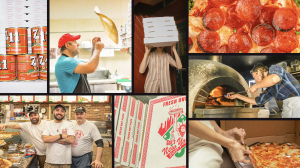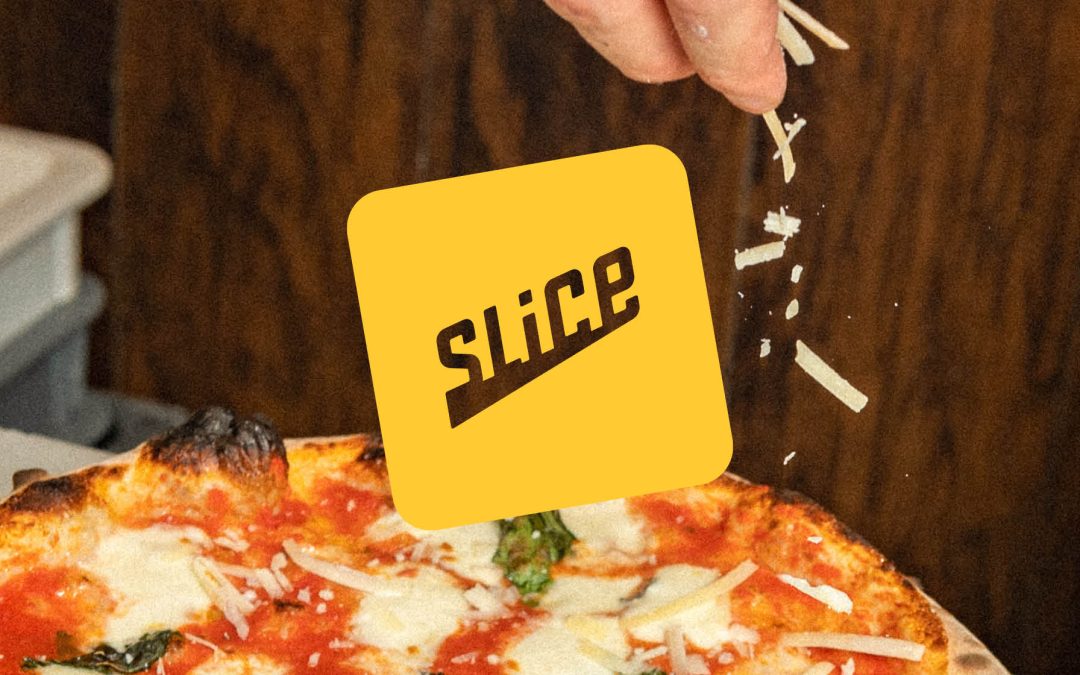Slice wants every independent pizza operator to know that it’s not just another online ordering service. As part of a comprehensive rebranding, the pizza-focused ordering platform is broadening its reach to bring technology and marketing services to tens of thousands of independent pizzerias across the country.
While the visual change of the rebranding is clear, with a “cheesy” yellow logo and imagery of individual pizzerias with custom branding across all of Slice’s channels, the real meat is doing what most independent pizza shops can’t do for themselves. That includes updated branding that’s suitable for digital environments, exploring the creation of custom-printed pizza boxes and additional features, like customized websites and vectorized logos, reportedly coming soon.

Terrence Morash, VP, Head of Creative at Slice
Terrence Morash, VP, head of creative at Slice, said the multi-pronged approach is the key to the company’s mantra that it’s a transparent first-party partner dedicated to helping independent restaurants thrive in a newly digitized industry.
That focus includes upgrading visual assets, but stretches down to minutiae like better product photos to show, rather than tell, an existing pizzeria’s customers why it’s a unique business that stands out amid one of the most crowded culinary categories in North America.
“We’re not trying to get [customers] to order at the next pizzeria, we just want you to keep ordering from the one that you already know and love,” Morash said. “We want to be the behind-the-scenes engine that is powering that restaurant, doing all the things they can’t do. They don’t have 1,000 people working for them directly, but they do with us.”
Altogether, the refocus is an ambitious effort from the 22-year-old brand founded by Ilir Sela in New York City. Now up to more than 18,000 pizzerias using its platform, Slice has racked up a number of victories as the pandemic boosted delivery—and pizza, in particular—in recent years.
Not a Grubhub, etc.
 In May of 2020, the company received a $43 million investment as anything pizza-related was flying off the shelves. Later that same year, it launched its Accelerate program to move beyond solely aggregating customer demand, and into areas like banding its customers together for collective purchasing and bargaining power, which Sela previously referred to as “reverse franchising.”
In May of 2020, the company received a $43 million investment as anything pizza-related was flying off the shelves. Later that same year, it launched its Accelerate program to move beyond solely aggregating customer demand, and into areas like banding its customers together for collective purchasing and bargaining power, which Sela previously referred to as “reverse franchising.”
Accelerate was the beta program for its latest initiative, with Slice’s design team now focusing on automating client restaurant branding, rather than dedicating individual marketers and designers to one specific pizza shop at a time. Morash said bringing this effort to scale meant thinking bigger and faster than ever before.
Those bespoke marketing services are still available to Slice clients on an ad hoc basis, but now the company is using its in-house talent and technical chops to roll these services out to a much larger cohort of independent restaurants.
The end goal is providing Slice’s restaurants with logos and an easily digestible brand narrative that can be used everywhere from online ad campaigns and social media marketing, to the eventual custom boxes and bags that Slice hopes to roll out next.
“What we found over time is that this is a service a lot of the restaurants want,” he added. “Not every restaurant understands branding even when we try to educate them on the importance of it. This isn’t just about making things look good, it’s about the efficiency of being able to promote your business.”
 Because Slice isn’t a logistics provider with a fleet of drivers, but rather an ordering platform to bring lower-tech restaurants into the digital age, that message will now be communicated through its own channels by using product and beauty shots from restaurants on its platform.
Because Slice isn’t a logistics provider with a fleet of drivers, but rather an ordering platform to bring lower-tech restaurants into the digital age, that message will now be communicated through its own channels by using product and beauty shots from restaurants on its platform.
“We really needed to take a hard look at how we’re putting ourselves out in the world, what our products look like, not just from an aesthetics standpoint but from a functionality standpoint,” Morash said. “How do we speak to the owners so people start to understand we’re not just a Grubhub for pizza, that we’re this really robust ecosystem.”
After years at creative design agencies, then going in-house at Shutterstock before Slice, Morash said this multi-year project has been a treat for his team, pulling on everything from graphic design to software engineering and podcasting, including a lot of time spent one-on-one with independent restaurant owners.
Asked if the company was considering entering another mega-cuisine vertical beyond pizza, he towed the company line Sela has often stated, saying Slice’s teams have plenty of remaining runway with the 57,000 independent pizza shops that aren’t on the platform.
“I need a mission I can really believe in,” Morash added. “I tend to obsess about work. I’m a workaholic, unabashedly, but I love doing that when I know I’m doing that for the right reasons. If it’s midnight and I’m still cranking on something, I know I’m helping out a small business [and] that makes it so much more fulfilling.”


